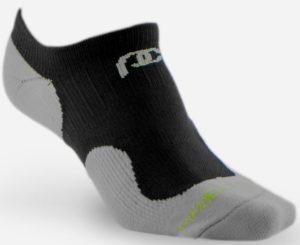Charity tournament schedule returning to normal
April 23, 2021

Cape Henlopen HS golf team player Forest Dotterer watches a putt roll during a recent practice round. The Vikings have three match dates scheduled for the week of April 25.
The COVID-19 pandemic caused major disruptions in the 2020 Cape Region charity tournament schedule, with dozens of cancelled, rescheduled, or downsized events.
Thankfully, this aspect of the pandemic is showing signs of disappearing for 2021.
For example, the Long Neck Sunrise Rotary Club is holding its 12th Annual Charity Golf Tournament June 14 at The Peninsula in Millsboro. Proceeds from this popular event support Long Neck area organizations serving youth, adult literacy, and programs to stem opioid use and care for opioid epidemic victims. In addition, the tournament also supports Rotary International’s continuing drive to eradicate polio.
The $150 entry fee covers the range, golf with cart, a box lunch and gourmet dinner, and $10 in drink tickets for the refreshment cart or the cocktail hour. A $5,000 putting contest takes place at 11:30 a.m. with the shotgun start for the round at noon. The putting contest prize will be split evenly between the winner and the Oak Orchard Boys and Girls Club in the winner’s name. Hole in one prizes can also be won at the four par 3s during the round.
Register for the event at longnecksunriserotaryclub. com/projects-2/. For information about sponsoring the tournament, contact Mike Hall at jandmhall1227@msn.com.
The 11th Annual Eleanor Soltner Memorial Golf Outing is also seeking sponsors for its event, scheduled for July 23 at Mulligan’s Pointe near Georgetown.
The scramble-format tournament supports the Delaware Hospice Center in Milford, DE, and is named for an avid Cape Region golfer. The event moved to Mulligan’s Pointe this year after ten successful tournaments at the now-shuttered Rookery North.
The $100 entry fee includes green fees, cart, light breakfast, refreshment cart, range balls, and awards reception with lunch.
Sponsor levels run from $100 to $5,000 and feature a variety of playing and recognition benefit options. Silent auction items are also sought.
For more information, contact Bob Burd at 302-393-3873.
PRO Compression socks
Last fall the marketing folks at PRO Compression sent me some of their golf-specific socks for testing and review.
My first impression was that they knew how old I was and that they are targeting seniors. I never thought of compression socks as useful for anyone other than the older generation or frequent travelers whose legs bothered them after hours of flight time or driving.

PRO Compression socks for golf
I am pleased to report I was misguided.
Compression socks are recognized as a potentially valuable element of a sports wardrobe, especially for athletic endeavors that call for hours of standing, walking, or movement. The pressure applied by the socks during use helps increase blood flow and recovery afterward.
I used the nylon-poly blend PRO Compression socks during four rounds of walking the Bay Course at Seaview Resort during last fall’s ShopRite LPGA Classic presented by Acer. I also tested them during several long bike rides. More recently I wore them during my regular rounds of 18 holes and then walking another 7-9 holes afterward while coaching the Cape golf team.
I tried the No-Show version ($32 SRP) whose coverage stops just above the shoe line. They fit very snugly when putting them on and becoming accustomed to the compression effect takes a little while. Once underway, however, I didn’t really notice the difference.
The real change came after the rounds. My feet didn’t have the usual sore or tired reaction to all that walking. Neither 27-hole days nor 30-mile rides created any issues for my feet – leaving me to wonder if there’s such a thing as a compression bodysuit for the rest of me.
If your feet give you fits after a round of golf, I suggest you try a pair of compression socks and see if they help. They did for me.
Local club competition results
The Mulligan’s Pointe Ladies played a fewest putts game April 20, won by Linda Townsend. Janece Hausch finished second and Diane Braver took third.
The Kings Creek Country Club 9-holers played a Baker’s Dozen match April 15, in which the players’ best 5 net scores counted. Twenty-eight golfers split into three flights.
Carolyn Horn won first place gross in the first flight. Barbara Weissenberger won first place net, with Lesley Corydon in second and Cathy Larrabee in third.
Terry Boston won first place gross in the second flight, with Beth Cohen winning first place net. Beth Cohen took second and Linda Miniscalco finished third.
Melissa Quin won first place gross in the third flight, with Fran Sneider winning first place net.
Stephanie Roach finished in second and Noreen Buzerak took third.
Twenty-four members of the Kings Creek CC Ladies 18-Hole group also played their version of the Baker’s Dozen format April 15.
Andy Robinson won first place gross in the third flight, with Barbara Hines winning first place net. Linda Outlaw finished second and Jean Chlastawa took third.
Dawn Dupre won first place gross in the second flight, with Sally Chamberlain winning first place net. Lori Guitson took second while Robbie Monkman finished third.

